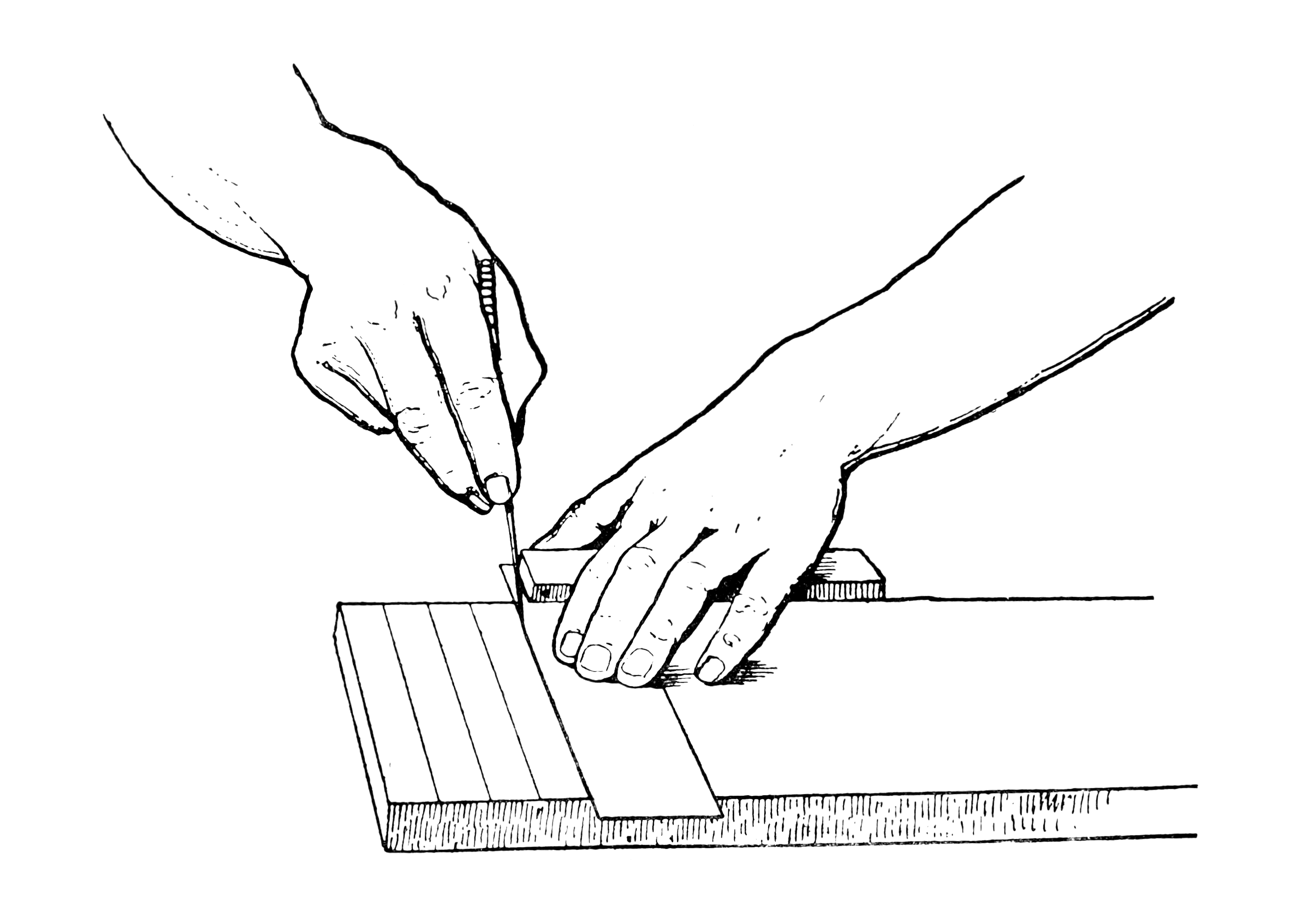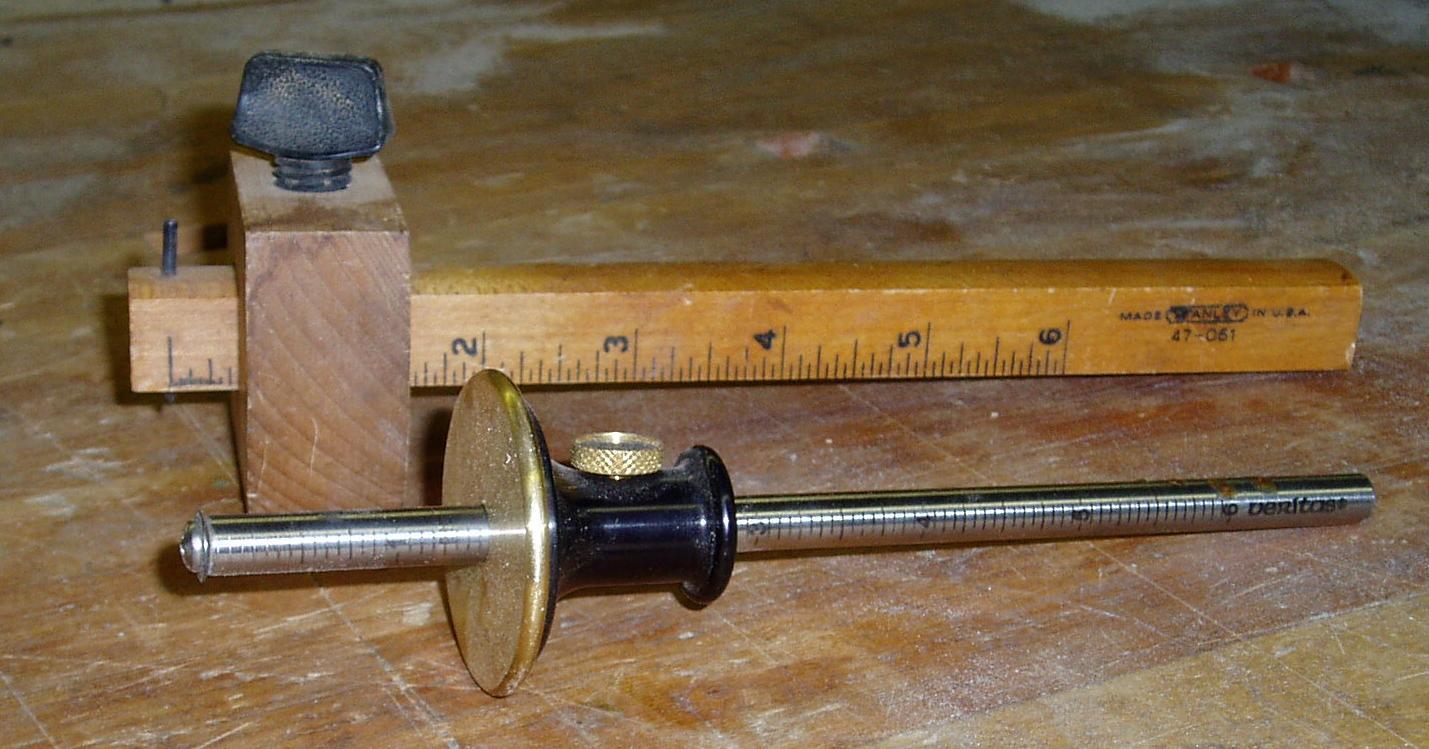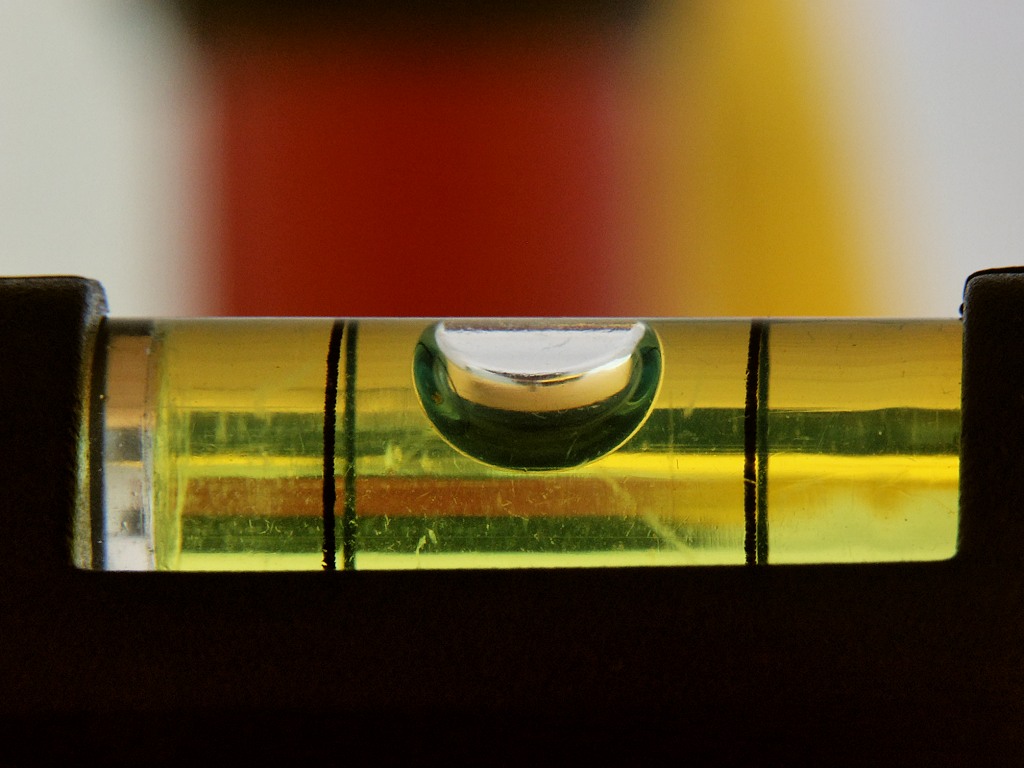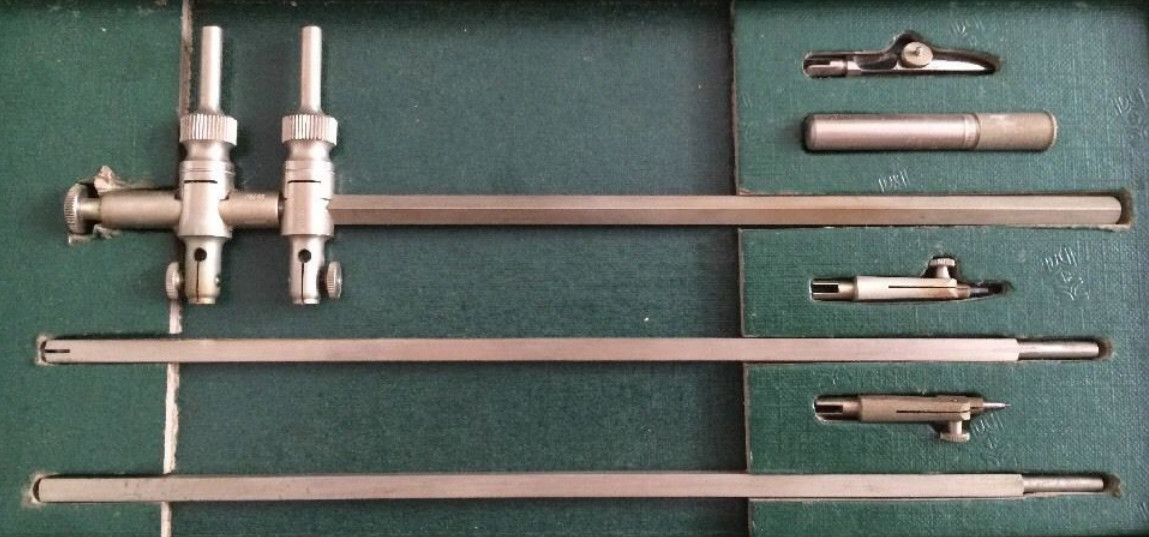|
Stanley Odd Jobs
The Stanley No. 1 Odd Jobs was a tool produced by the Stanley Works from 1888 to the 1930s. It combined features of sundry tools, in a single pocketable tool, including: * Try square * Mitre square * T-square * Marking gauge * Mortise gauge * Depth gauge * Mitre level * Spirit level and plumb * Beam compass * Inside square * Ruler (a separate part used to enable many of the above functions. Often a four fold rule, trimmed in brass, was used) The name ''Odd Jobs'' denotes that the tool does many kinds of sundry tool roles. Its closest cousin among common, modern tools, is the combination square, which shares with the Odd Job the functions of scribing, squaring, level/plumb, and the sliding and locking ruler (originally a 12 inch wooden ruler with a built-in trammel point was included with units bundled with a ruler, but this was often changed and many are found with a steel rule, or a brass-bound four-fold rule --- the Garret Wade reproduction uses a brass bound wooden ruler). Howe ... [...More Info...] [...Related Items...] OR: [Wikipedia] [Google] [Baidu] |
Stanley Hand Tools
Stanley Hand Tools is a brand of hand tools. It is a division of Stanley Black & Decker, following the merger of The Stanley Works with Black & Decker in March 2010. History The Stanley Works was founded by Frederick Trent Stanley in 1843, originally a bolt and door hardware manufacturing company located in New Britain, Connecticut. The Stanley Rule and Level Company was founded in 1857 by Frederick Trent Stanley's cousin, Henry Stanley, also in New Britain. In 1920, this company merged with the Stanley Works, and continued operating as its hand tools division. Around 1937, Stanley acquired the British J. A. Chapman company, a British manufacturer of carpentry tools and other items (including bayonets during World War I) formerly located in Sheffield, from Norman Neill. This helped Stanley to enter the British market. Products Stanley is a well known brand of tools and has produced millions of hand planes, saws, rulers, try squares, chisels, screwdrivers, and many other ... [...More Info...] [...Related Items...] OR: [Wikipedia] [Google] [Baidu] |
Try Square
A try square or try-square is a woodworking tool used for marking and checking 90° angles on pieces of wood. Though woodworkers use many different Square (tool), types of square, the try square is considered one of the essential tools for woodworking. The ''square'' in the name refers to the Right angle, 90° angle. To ''try'' a piece of wood is to check if the edges and faces are straight, flat, and square to one another. A ''try square'' is so called because it is used to ''try'' how ''square'' the workpiece is. Description A try square is made of two key parts, the ''blade'' (also known as a ''beam'' or ''tongue'') and the ''stock'', which are fixed together at 90° to form an 'L' shape. The blade is usually made of wood or steel and is fixed into the stock, which is usually thicker than the blade and made of wood, metal or plastic. Both the stock and the tongue are usually made with parallel edges. Typically the blade and the stock will be rectangular in profile, though on ... [...More Info...] [...Related Items...] OR: [Wikipedia] [Google] [Baidu] |
Miter Square
A miter square or mitre square is a hand tool used in woodworking and metalworking for marking and checking angles other than 90°. Most miter squares are for marking and checking 45° angles and its Angle#Combining angle pairs, supplementary angle, 135°. ''A miter'' is a bevelled edge – usually 45° – used, for example, for making Miter joint, miter joints for woodworking. ''Square (tool), Squares'' are tools designed for marking and checking specific fixed angles, usually 90° or 45°, though most squares are exclusively for working with 90° angles. Description As with Square (tool), 90° squares, there are many different types of miter square. Miter squares are usually made from two fixed parts, a ''stock'' and a ''blade'' (sometimes called a ''tongue''). The blade on a modern factory-made miter square is typically a thin piece of metal which is fixed at 45° onto or into the stock, forming a T''' shape. The stock is usually much thicker than the blade and is made from ... [...More Info...] [...Related Items...] OR: [Wikipedia] [Google] [Baidu] |
T-square
A T-square is a technical drawing instrument used by draftsmen primarily as a guide for drawing horizontal lines on a drafting table. The instrument is named after its resemblance to the letter T, with a long shaft called the "blade" and a short shaft called the "stock" or "head". T-squares are available in a range of sizes, with common lengths being , , , and . In addition to drawing horizontal lines, a T-square can also be used with a set square to draw vertical or diagonal lines. The T-square usually has a transparent edge made of plastic which should be free of nicks and cracks in order to provide smooth, straight lines. T-squares are also used in other industries, such as construction. For example, drywall T-squares are typically made of aluminum and have a long tongue, allowing them to be used for measuring and cutting drywall. In woodworking, higher-end table saws often have T-square fences attached to a rail on the front side of the table, providing improved accuracy ... [...More Info...] [...Related Items...] OR: [Wikipedia] [Google] [Baidu] |
Marking Gauge
A marking gauge, also known as a scratch gauge, is used in woodworking and metalworking to mark out lines for cutting or other operations. The purpose of the gauge is to scribe a line parallel to a reference edge or surface. It is used in joinery and sheetmetal operations. The gauge consists of a beam, a headstock, and a scribing or marking implement, typically a pin, knife, pen or wheel. The headstock slides along the beam, and is locked in place by various means: a locking screw, cam lever, or a wedge. The marking implement is fixed to one end of the beam. Types The marking implement is chosen depending upon the operation to be performed. Some marking gauges have the capability to allow a number of implements to be fitted, others do not; and a woodworker will often have a number of different types. A steel pin is used when scribing with the grain. A steel knife is used when scribing across the grain. The pen or pencil is used when the woodworker does not wish the surface to b ... [...More Info...] [...Related Items...] OR: [Wikipedia] [Google] [Baidu] |
Depth Gauge
A depth gauge is an instrument for measuring depth below a reference surface. They include depth gauges for underwater diving and similar applications, and engineering instruments used to measure the depth of holes and indentations from a reference surface. A diving depth gauge is a pressure gauge that displays the equivalent depth below the free surface in water. The relationship between depth and pressure is linear and accurate enough for most practical purposes, and for many purposes, such as diving, it is actually the pressure that is important. It is a piece of diving equipment used by underwater divers, submarines and submersibles. Most modern diving depth gauges have an electronic mechanism and digital display. Earlier types used a mechanical mechanism and analogue display. Digital depth gauges used by divers commonly also include a timer showing the interval of time that the diver has been submerged. Some show the diver's rate of ascent and descent, which can be is u ... [...More Info...] [...Related Items...] OR: [Wikipedia] [Google] [Baidu] |
Spirit Level
A spirit level, bubble level, or simply a level, is an instrument designed to indicate whether a surface is horizontal (level) or vertical (plumb). Different types of spirit levels may be used by carpenters, stonemasons, bricklayers, other building trades workers, surveyors, millwrights and other metalworkers, and in some photographic or videographic work. Construction Early tubular spirit levels had very slightly curved glass vials with constant inner diameter at each viewing point. These vials are incompletely filled with a liquid, usually a colored spirit or alcohol, leaving a bubble in the tube. They have a slight upward curve, so that the bubble naturally rests in the center, the highest point. At slight inclinations the bubble travels away from the marked center position. Where a spirit level must also be usable upside-down or on its side, the curved constant-diameter tube is replaced by an uncurved barrel-shaped tube with a slightly larger diameter in its middle. ... [...More Info...] [...Related Items...] OR: [Wikipedia] [Google] [Baidu] |
Beam Compass
A beam compass is a compass with a beam and sliding sockets or cursors for drawing and dividing circles larger than those made by a regular pair of compasses. The instrument can be as a whole, or made on the spot with individual sockets (called trammel points) and any suitable beam. Draftsman's beam compass A draftsman's beam compass consists of a set of points and holders, mounted on a plated brass, aluminum, or German 'silver' rod. One end is generally locked down at the end of the rod, while the other has both rough and fine adjustments, though some are opposite in construction. The locked tip holder consists of a needle, for the centre of the radius, and the other holds either a lead clutch, or an inking nib. There are older variants which use a wooden beam. Another similar type is a Machinist or Engineers beam compass, which uses scribing points only, similar to ones used by woodworkers, except that its fine adjustment is generally more refined. These beam compasses can ... [...More Info...] [...Related Items...] OR: [Wikipedia] [Google] [Baidu] |
Combination Square
A combination square is a multi-purpose measuring and marking tool used in metalworking, woodworking, and stonemasonry. It is composed of a rule and one or more interchangeable heads that can be attached to the rule. Other names for the tool include adjustable square, combo square, and sliding square. The most common head is the standard head, which is used as a square for marking and testing 90° and 45° angles. The other common types of head are the protractor head, and the centre finder head. Description Rule Combination square rules are made of steel and can be purchased with gradations in metric, imperial, or both metric and imperial. Both faces of the rule have markings, providing four different sets of markings. This allows different sides to have different graduations (eg. 1mm or 0.5mm markings) or units (ie. metric and imperial). The rule typically comes in lengths between 150mm and 600mm or between 4 inches and 24 inches. Heads The heads, occasionally called anvi ... [...More Info...] [...Related Items...] OR: [Wikipedia] [Google] [Baidu] |
Long Branch, New Jersey
Long Branch is a beachside City (New Jersey), city in Monmouth County, New Jersey, Monmouth County, in the U.S. state of New Jersey. As of the 2010 United States census, 2010 U.S. census, the city's population was 30,719,DP-1 - Profile of General Population and Housing Characteristics: 2010 for Long Branch city, Monmouth County, New Jersey , United States Census Bureau. Accessed July 3, 2012.Profile of General Demographic Characteristics: 2010 for ... [...More Info...] [...Related Items...] OR: [Wikipedia] [Google] [Baidu] |
Garrett Wade
Garrett Wade is a family-owned business, established in 1975 and based in DUMBO, Brooklyn and Cincinnati, Ohio. It sources and sells a range of high quality hand tools, primarily for woodworking, gardening, and outdoor work, based on traditional designs. It is best known for its tools used for woodworking. Garry Chinn is the founder and CEO of Garrett Wade. History In the spring of 1975, Garretson Wade Chinn mailed the first Garrett Wade catalog. It contained primarily woodworking tools sourced from around the world, with particular focus on Europe. The goal of the catalog, along with media like Fine Woodworking Magazine, was to reconnect men to the experience of using their hands, as they had done in shop class as boys. In 1995, responding to decreasing demand for woodworking tools, the company expanded its product line to hand tools for homeowners, with particular focus on gardening and outdoor tools. Recently, Garrett Wade also began researching, developing and manufacturing ... [...More Info...] [...Related Items...] OR: [Wikipedia] [Google] [Baidu] |
Hand Tools
A hand tool is any tool that is powered by hand rather than a motor. Categories of hand tools include wrenches, pliers, cutters, files, striking tools, struck or hammered tools, screwdrivers, vises, clamps, snips, hacksaws, drills, and knives. Outdoor tools such as garden forks, pruning shears, and rakes are additional forms of hand tools. Portable power tools are not hand tools. History Hand tools have been used by humans since the Stone Age when stones were used for hammering and cutting. During the Bronze Age tools were made by casting the copper and tin alloys. Bronze tools were sharper and harder than those made of stone. During the Iron Age iron replaced bronze, and tools became even stronger and more durable. The Romans developed tools during this period which are similar to those being produced today. In the period since the industrial revolution, the manufacture of tools has transitioned from being craftsman made to being factory produced. A large collection of ... [...More Info...] [...Related Items...] OR: [Wikipedia] [Google] [Baidu] |









